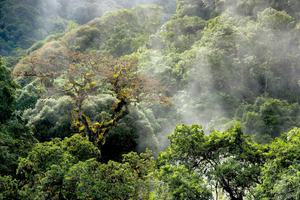In the two years since Russia launched its invasion, Ukraine has seen its forests burned, its rivers polluted, and its wildlife decimated, all of which “reverses many years of efforts towards sustainable development,” said Ukrainian environment minister Ruslan Strilets.
In total, the war has inflicted roughly $60 billion in environmental damage, according to a November report prepared in coordination with the environment ministry. Fires have burned 9,300 square miles, an area the size of Vermont, damaging large areas of woodland, while attacks on industrial sites and water treatment plants have endangered the supply of fresh water. According to the ministry, mines have been scattered across some 67,000 square miles, an area larger than Florida. Only around one-tenth of this land was cleared in 2023.
Officials also detailed threats to wildlife as a result of the conflict. The destruction of the Kakhovka dam last year is believed to have wiped out most of the fish in the Kahovka reservoir, while downstream flooding laid waste to sand lizards, steppe adders, and yellow-bellied grass snakes. In the Black and Azov seas, Russian sonar has killed an estimated 900 dolphins. And in the Zalissia National Nature Park, a herd of bison lost every male in the wake of the invasion. Conservationists are now working to reintroduce at least one male to maintain the herd.
In total, the war is responsible for the equivalent of 119 million tons of carbon dioxide emissions — more than the yearly output of the Netherlands — from military operations, forest fires, leaks from sabotaged gas pipelines, planes having to fly longer routes to avoid the conflict zone, and from efforts now and in the future to rebuild Ukraine.
Debra Javeline, who studies Russian politics and the environment at the University of Notre Dame, said of the war, “The humanitarian disaster is of the utmost importance — the number of deaths and structures that were destroyed — but the collateral damage is intense destruction to the atmosphere.”
ALSO ON YALE E360
Averting Crisis, Europe Learns to Live Without Russian Energy



